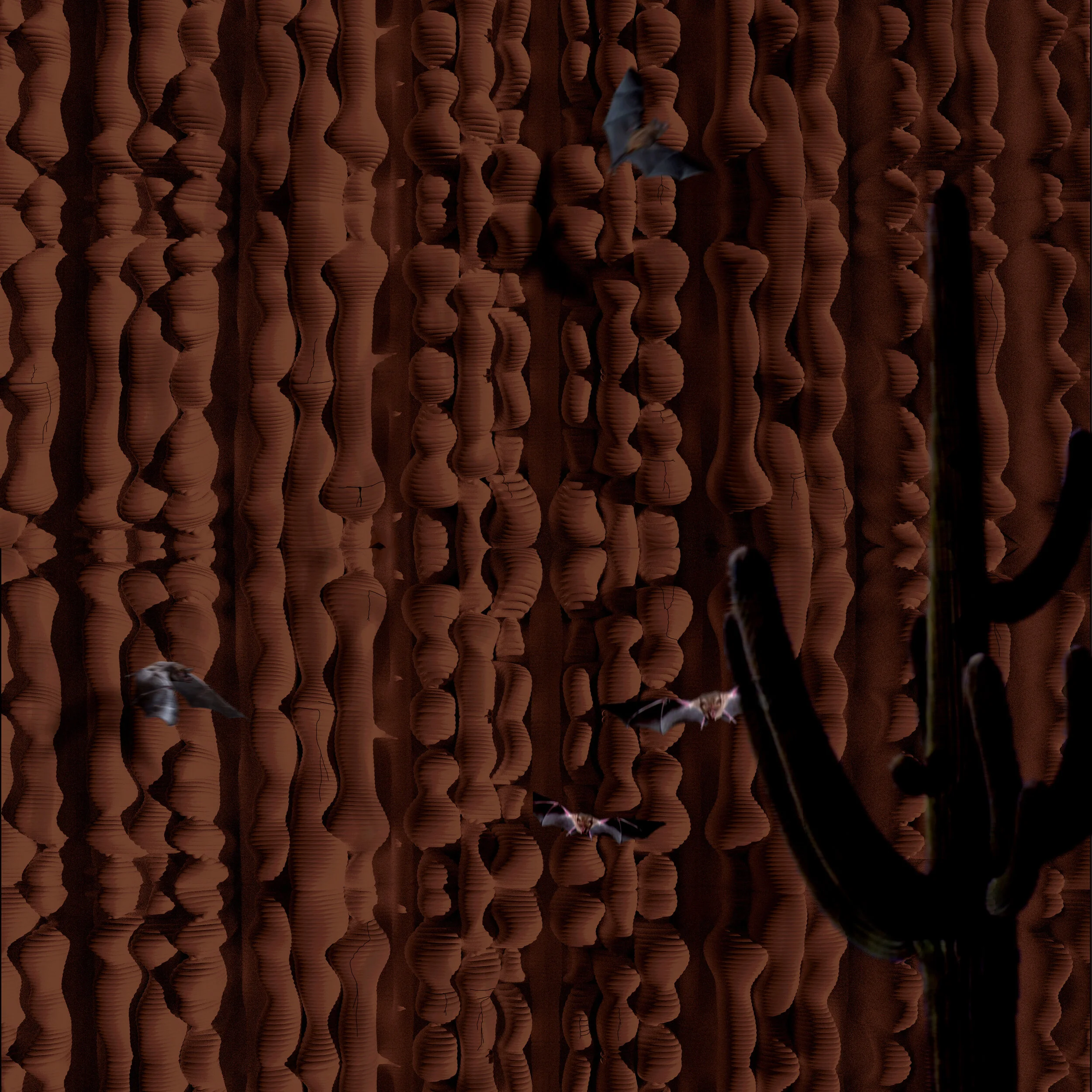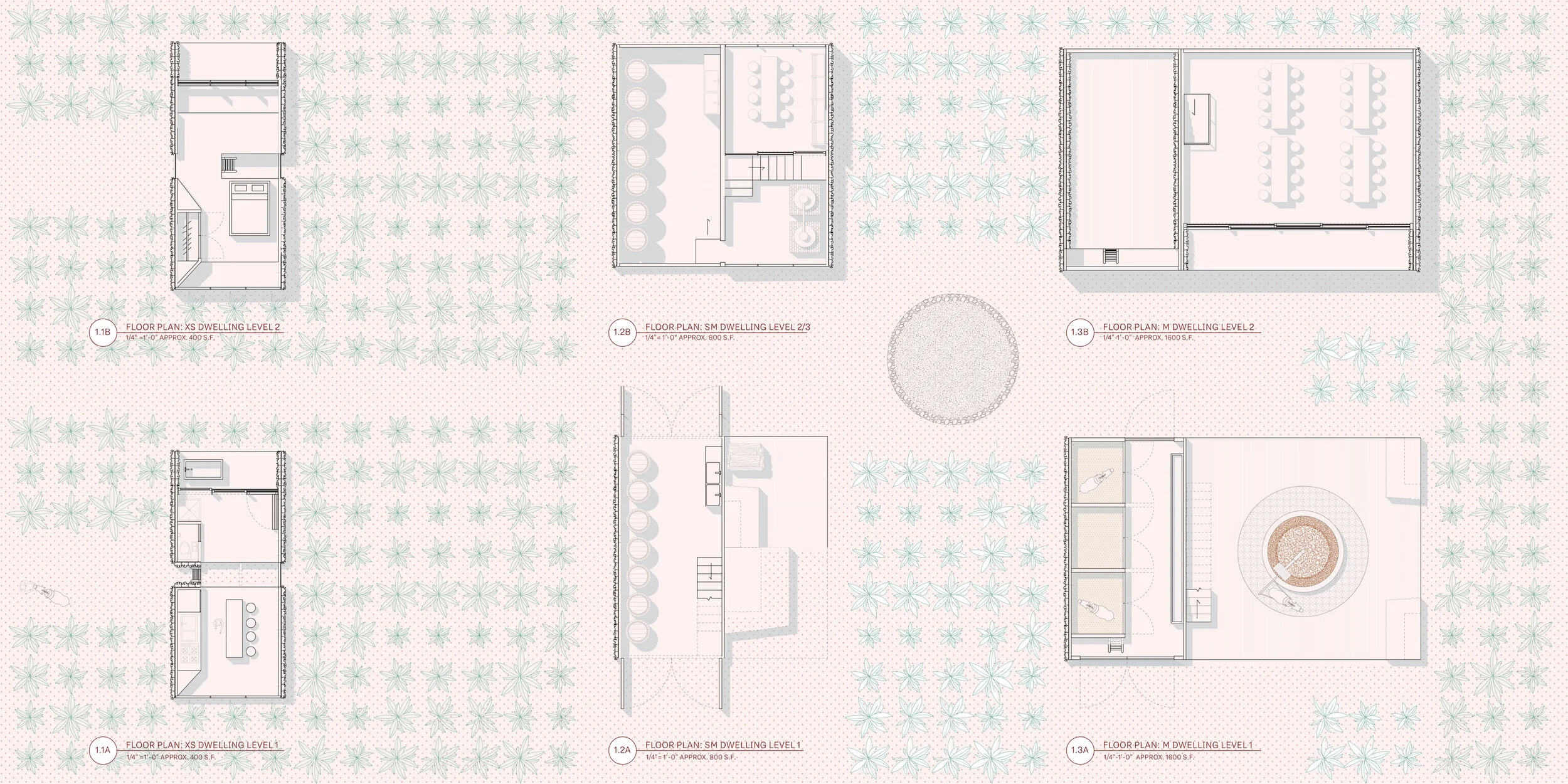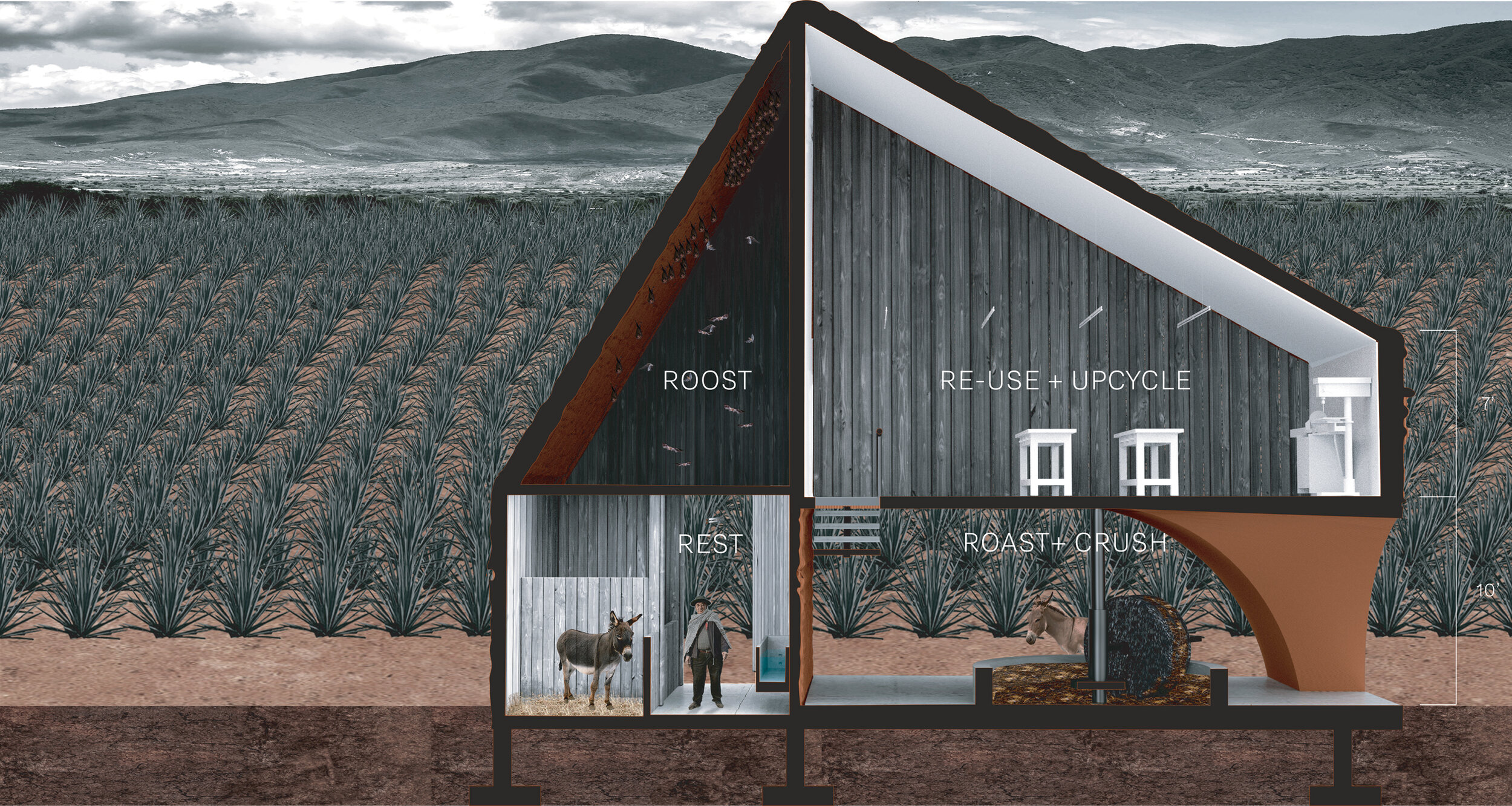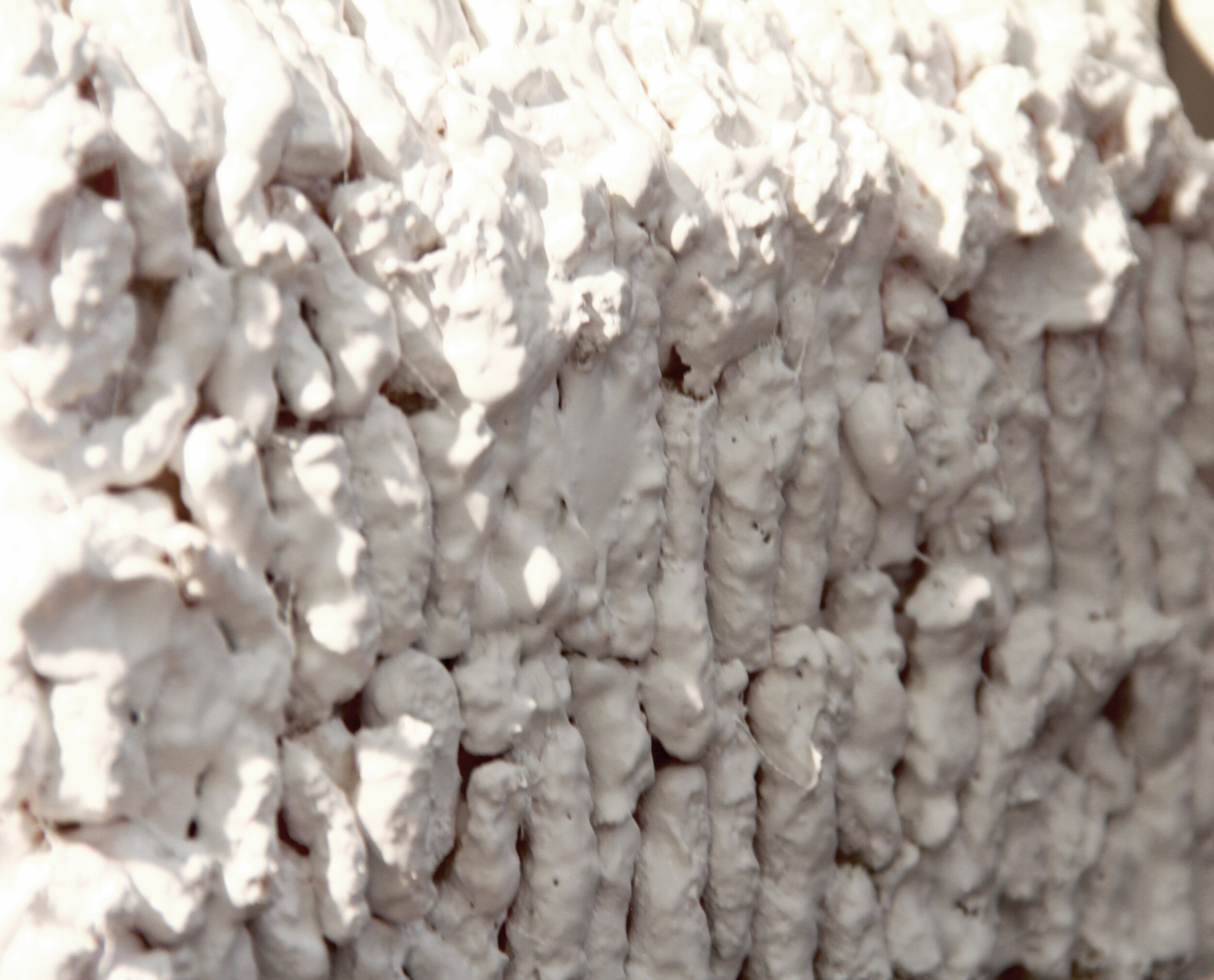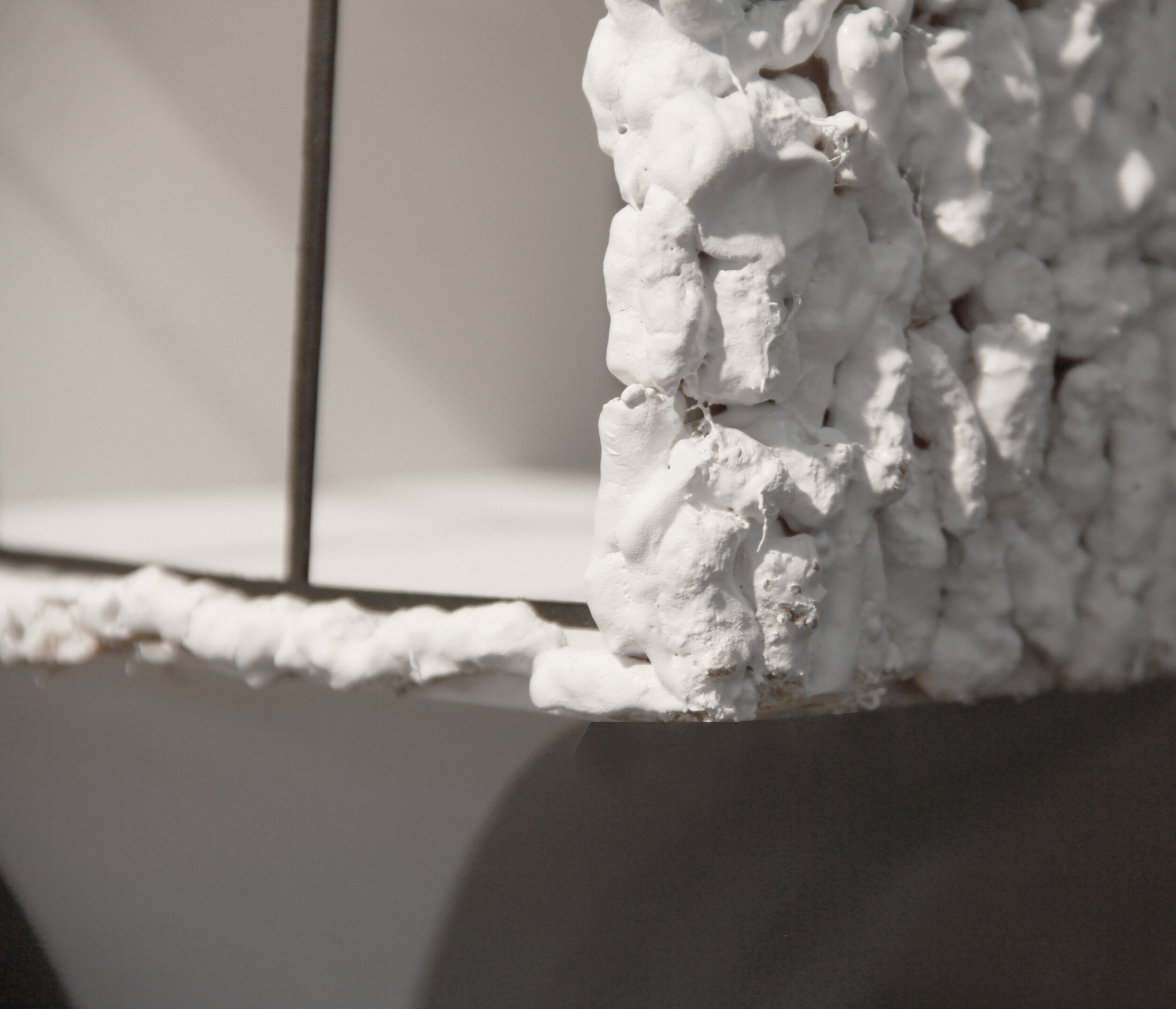
Ensemble murcielago + the digital myth
The various creation myths of architecture often alternate between early man either occupying found forms such as caves or constructing a primitive hut. Vitruvius mentions both of these possible origins for Architecture but he also mentions a third which is often forgotten: the possibility that humans first started building by watching more advanced builders: animals. Although we often think of architecture as a human activity, the diversity and sophistication of animal architectures are astounding.
In an age when we are finally recognizing the extent of our deep relationships with the environment around us and the microbiome within us, the project focuses on merging old techniques with rapidly evolving technologies: the precisioned tooling of digitally extruded clay fabrication that mimics the construction of caves, dens, nests, dams and other animal habitats.
My studies eventually led me to the Mexican Long-Tongued Bats- a keystone species that regulates a complex and sweeping ecosystem ranging across North America. From San Diego to El Salvador, these migratory mammals travel in search of food and suitable maternity roosts. Along their path, they act as the sole pollinators of several cacti, tropical fruits, and species of agave.
The project focuses on the bat as a key player for sustainable and biodynamic mezcal production, and the ways in which humans can become wild by learning to cohabitate with more of the animals they rely on. The design of a parametric brick system (bat housing) acts as the structural component to a variable building module. Through aggregation, the modules assemble to create extra- small, small, and medium dwellings.
